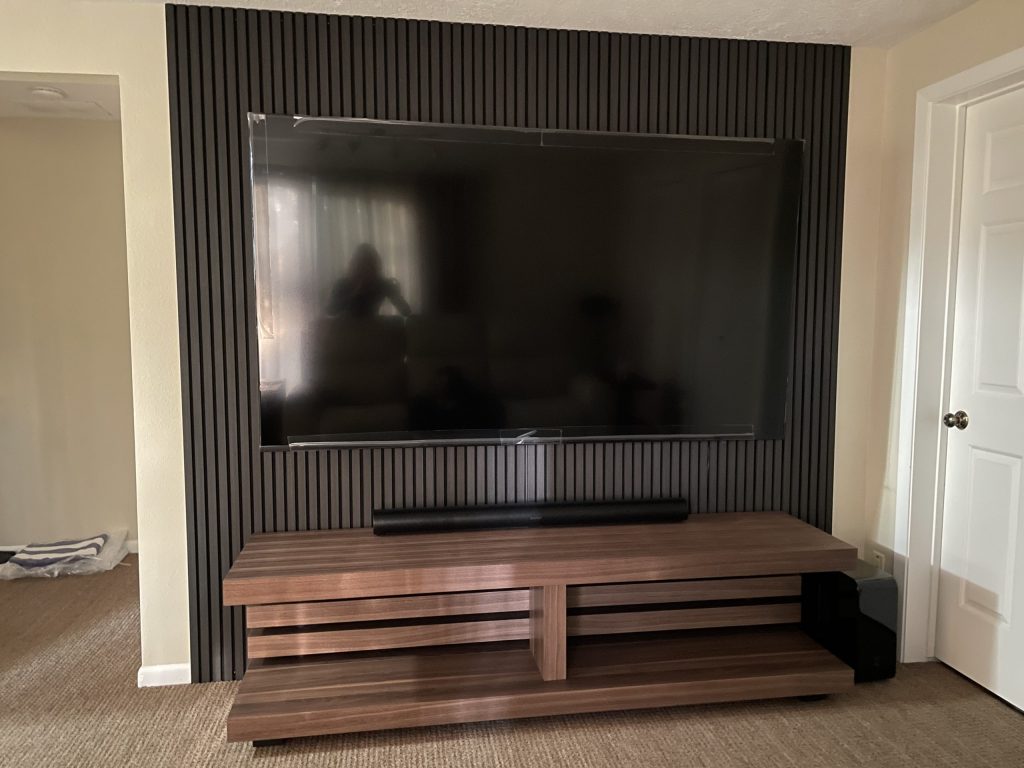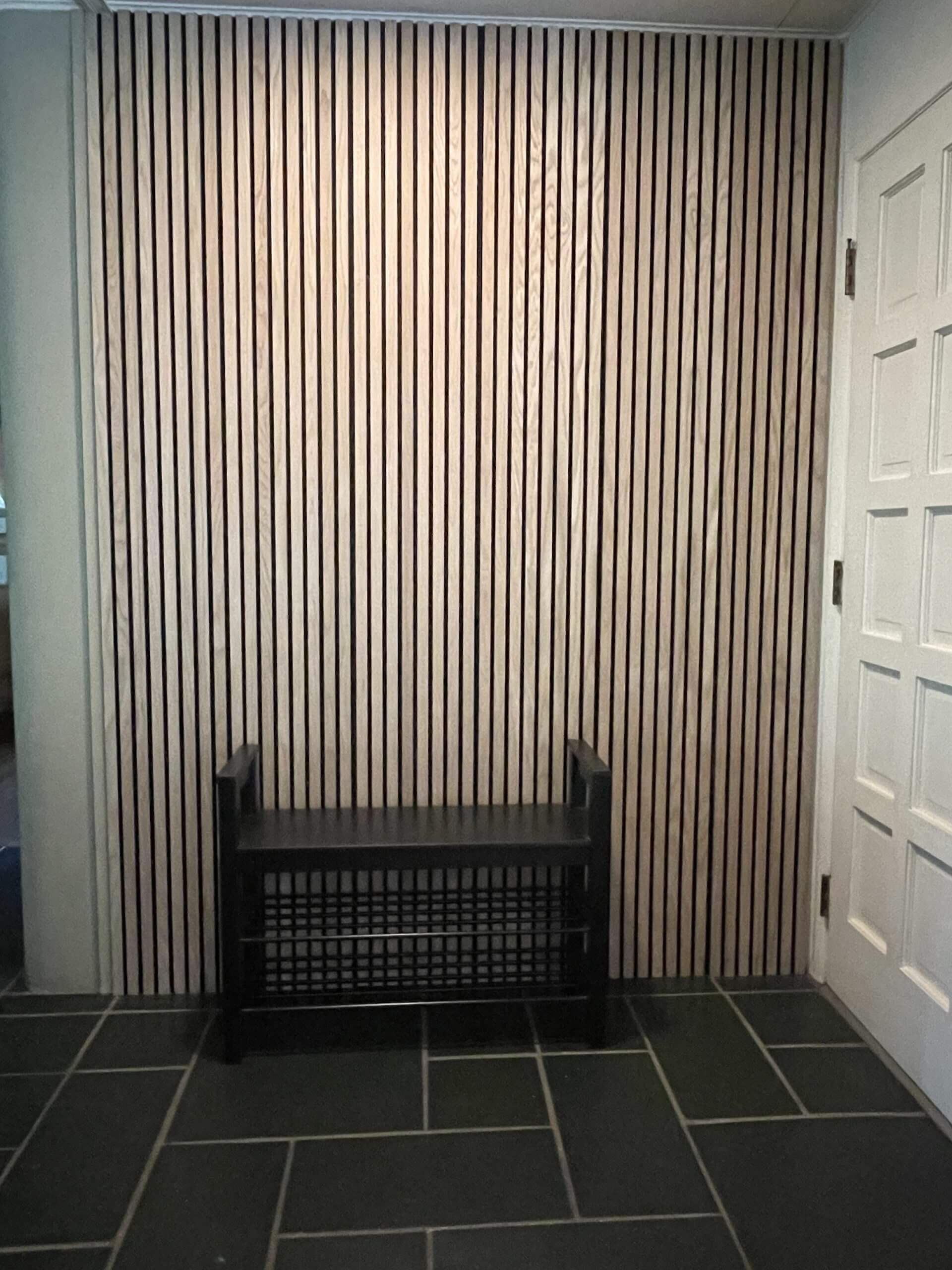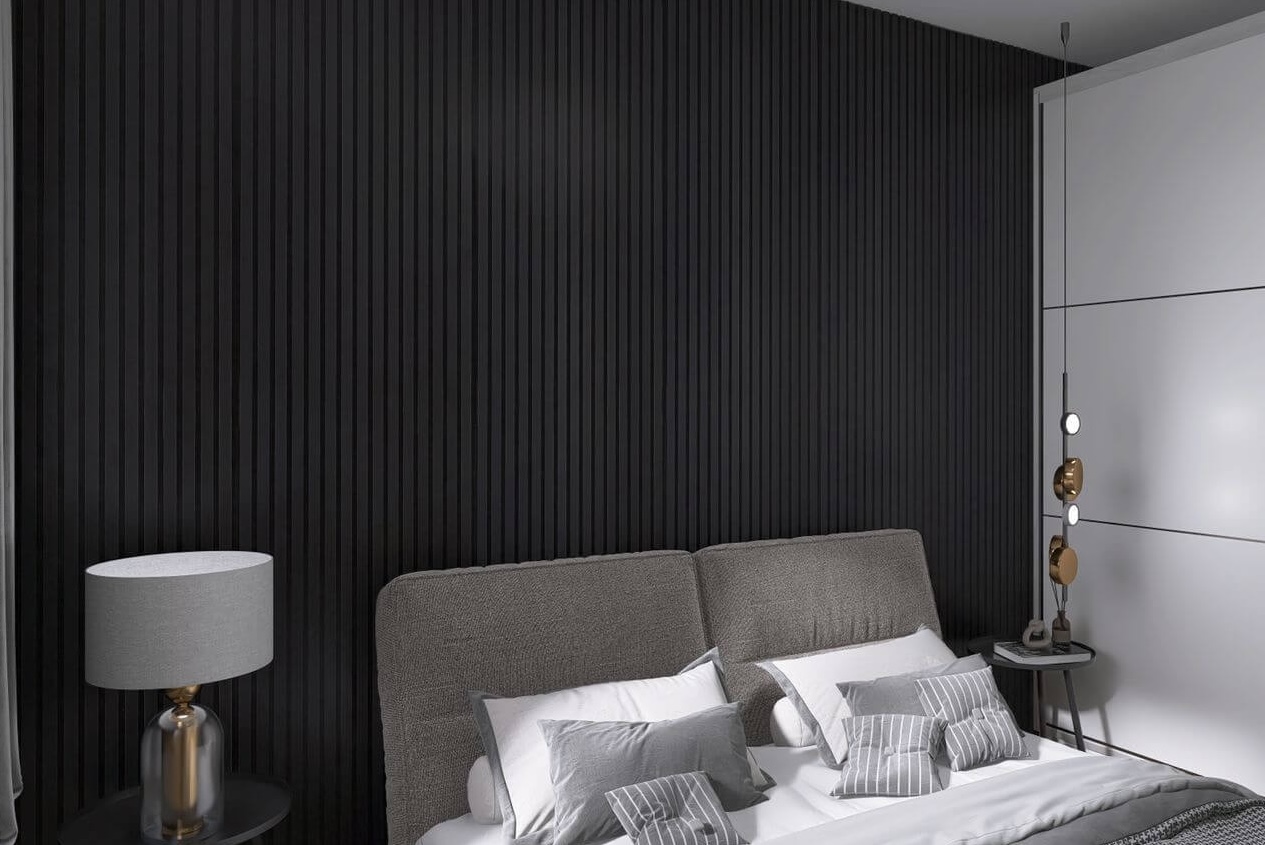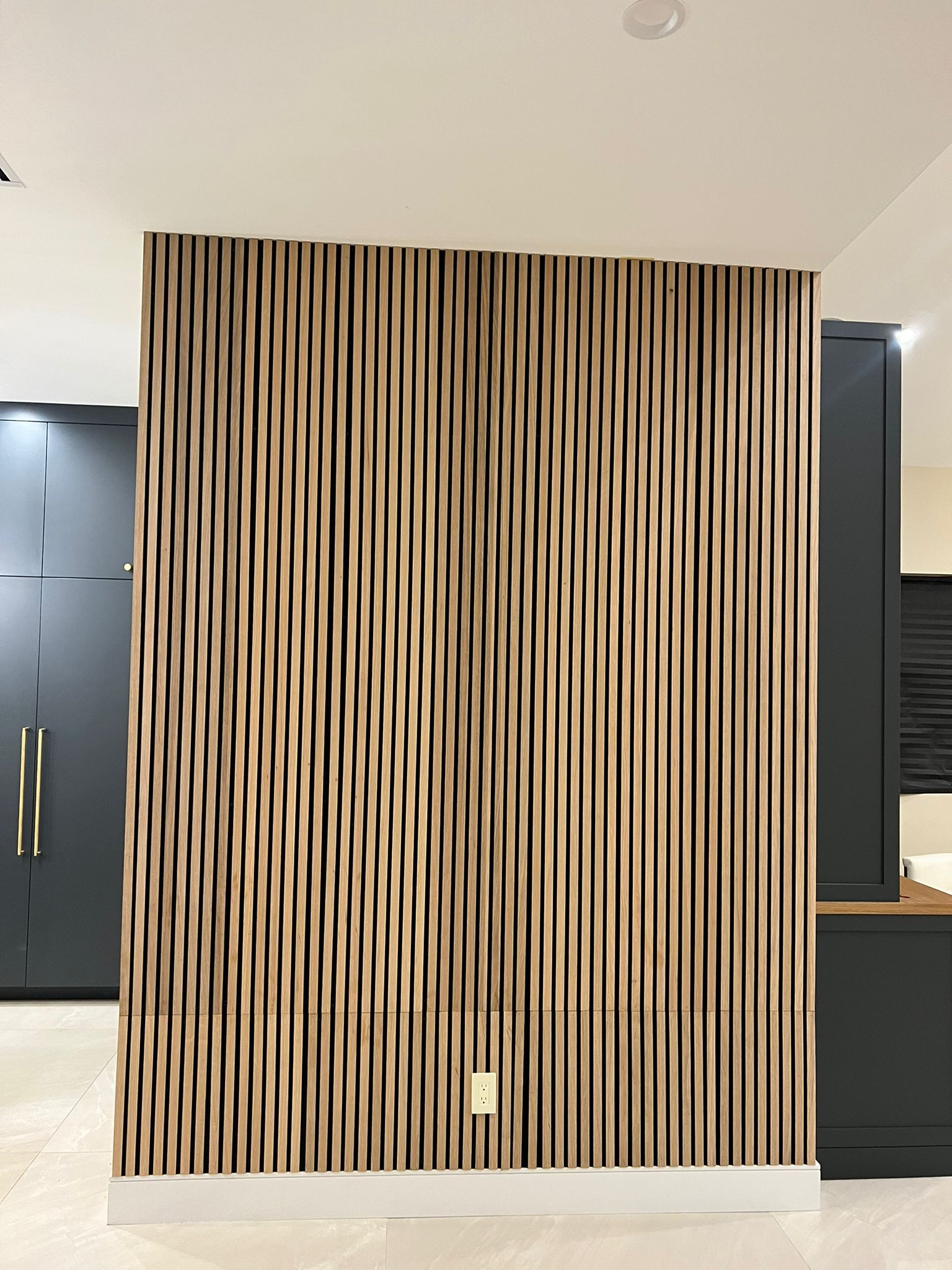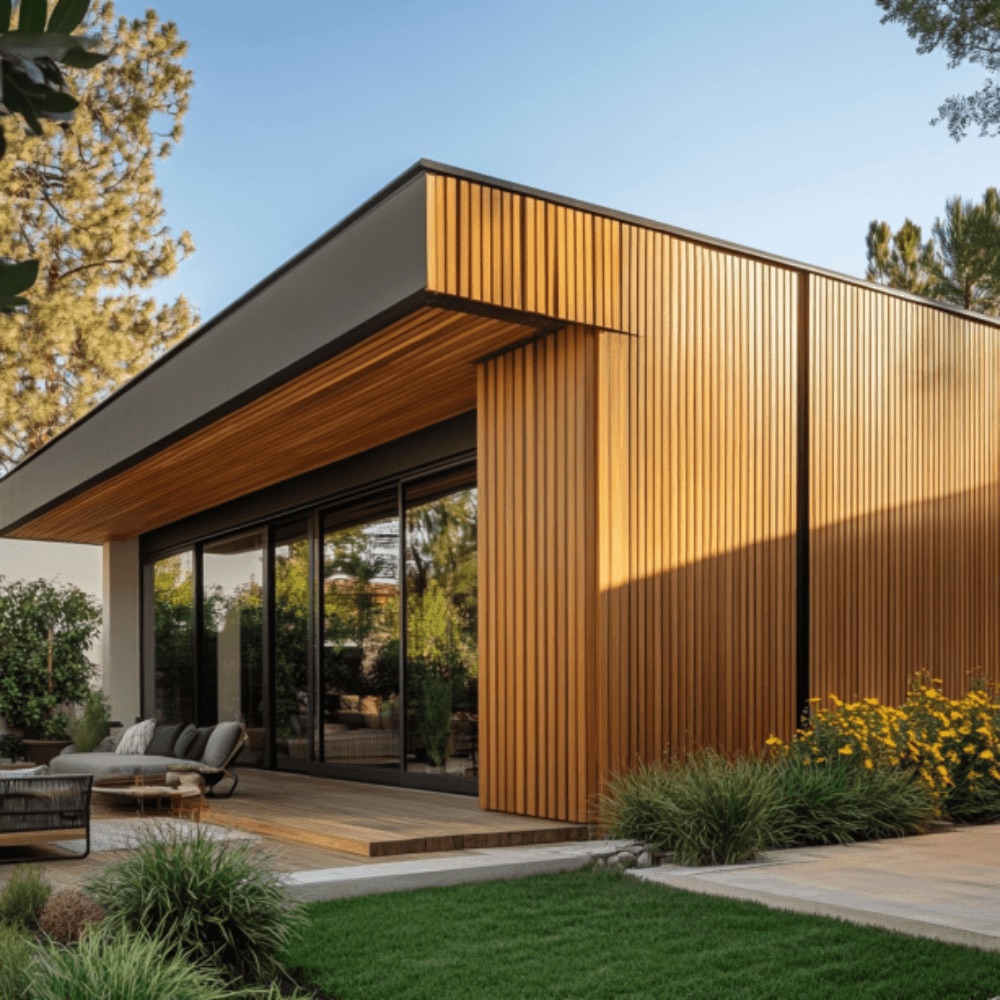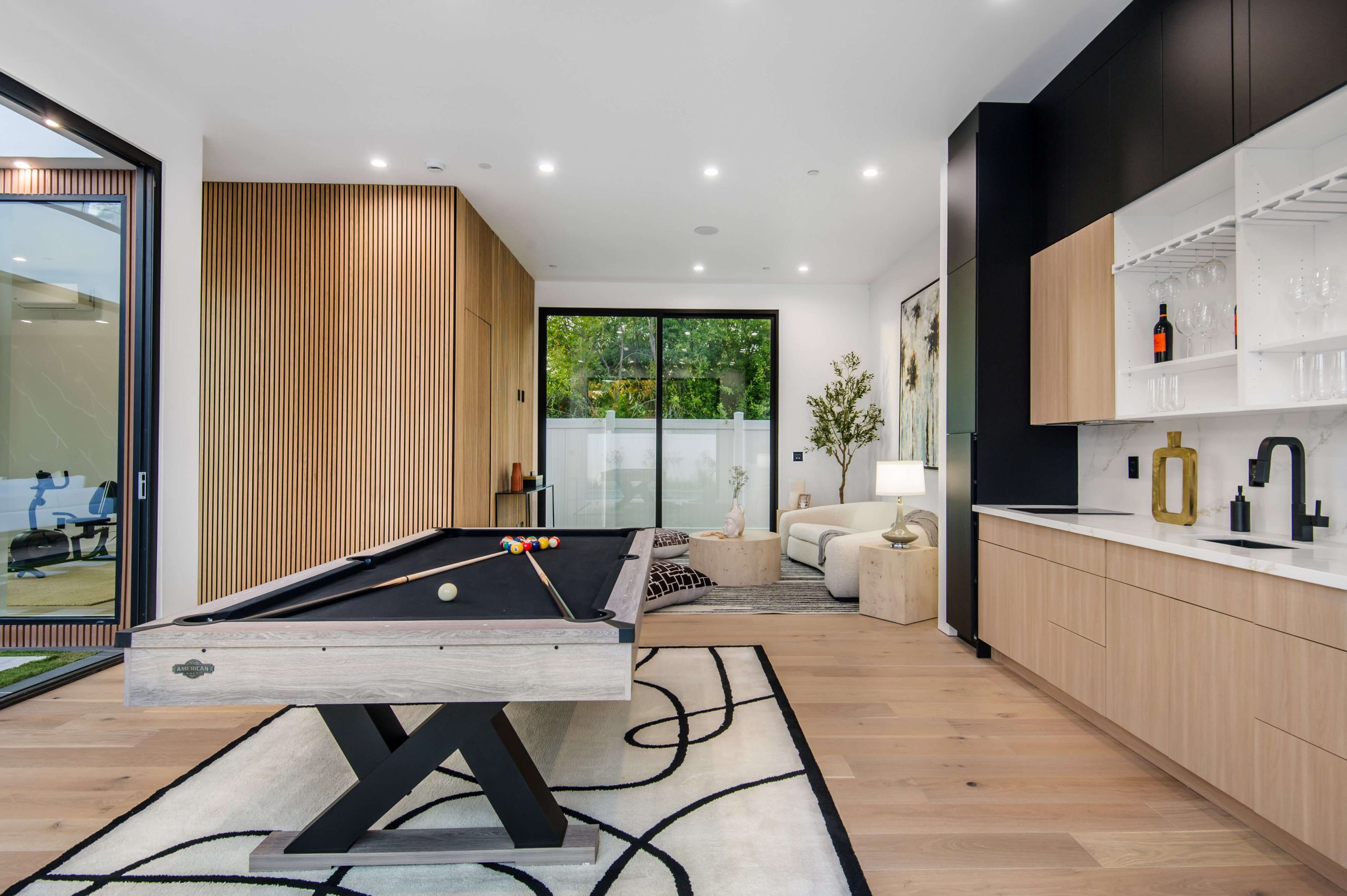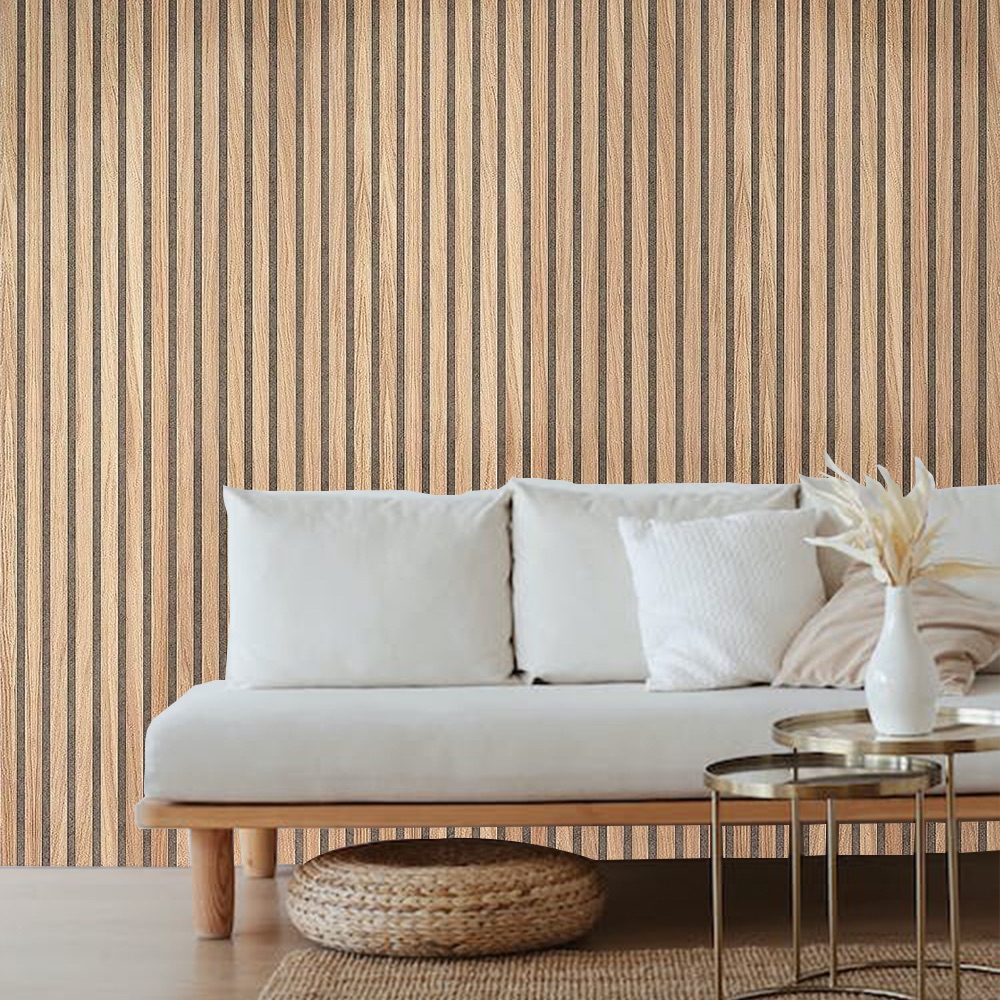Wood slat paneling is a popular choice for enhancing the aesthetics and acoustics of interior spaces. Selecting the appropriate type of wood is crucial to achieving the desired look, durability, and functionality. This article explores various types of wood suitable for slat paneling, providing insights into their characteristics and ideal applications.
1. Oak
Oak is a widely favored hardwood for slat paneling due to its strength and appealing grain patterns. It comes in two primary varieties:
- White Oak: Known for its light coloration and straight grain, white oak offers a clean and modern appearance. Its durability makes it suitable for high-traffic areas.
- Red Oak: Featuring a reddish hue and more pronounced grain, red oak adds warmth and character to spaces.
Both types of oak accept stains well, allowing for customization to match various interior designs.
2. Walnut
Walnut is esteemed for its rich, dark brown color and smooth texture, imparting a sense of luxury to interiors. Its fine grain and natural luster make it a standout choice for feature walls and upscale settings. However, walnut is generally more expensive than other woods and may require careful maintenance to preserve its appearance.
3. Cedar
Cedar is a softwood celebrated for its natural resistance to moisture, decay, and insects, making it ideal for humid environments like bathrooms and kitchens. Its aromatic scent and distinctive grain provide a rustic charm, and it can be left unfinished to showcase its natural beauty.
4. Pine
Pine is a cost-effective and versatile softwood, available in varieties such as white pine and southern yellow pine. It features a light color and subtle grain, suitable for both painted and stained finishes. Pine is relatively soft, which may lead to dents and scratches over time, but its affordability and ease of use make it a popular choice for DIY projects.
5. Ash
Ash is a hardwood recognized for its light color and straight grain, offering a contemporary look. It is strong and flexible, making it suitable for intricate designs and curved installations. Ash accepts stains evenly, allowing for various finish options to complement different decor styles.
6. Mahogany
Mahogany is a premium hardwood known for its deep reddish-brown color and fine grain. It exudes elegance and is often used in high-end applications. Mahogany’s durability and resistance to swelling and warping make it ideal for areas with fluctuating humidity levels. However, it is more costly and may be sourced from less sustainable origins.
7. Maple
Maple is a hardwood with a pale, creamy color and smooth grain, providing a sleek and modern aesthetic. It is highly durable and resistant to wear, making it suitable for high-traffic areas. Maple can be challenging to stain due to its density, often best showcased with a clear or light finish to highlight its natural beauty.
8. Teak
Teak is a tropical hardwood renowned for its exceptional durability and resistance to moisture and pests. Its golden-brown color and straight grain add a touch of sophistication. Teak is commonly used in both indoor and outdoor applications, but its high cost and sourcing concerns may limit its use in some projects.
Considerations When Choosing Wood for Slat Paneling
- Aesthetics: Consider the wood’s color, grain pattern, and how it aligns with the overall design theme.
- Durability: Assess the wood’s hardness and resistance to wear, especially in high-traffic areas.
- Maintenance: Understand the upkeep required to maintain the wood’s appearance over time.
- Environmental Impact: Opt for sustainably sourced wood to minimize environmental footprint.
Selecting the right type of wood for slat paneling involves balancing aesthetics, functionality, and budget considerations. By understanding the unique properties of each wood type, you can make an informed decision that enhances the beauty and value of your space.
Frequently Asked Questions
-
What is the most durable wood for slat paneling?
Teak and oak are among the most durable options, offering excellent resistance to wear and environmental factors.
-
Can softwoods like pine be used for slat paneling?
Yes, softwoods like pine are suitable for slat paneling, especially in low-traffic areas. They are more affordable but may be more prone to dents and scratches.
-
How does wood choice affect acoustics in a room?
Denser hardwoods like oak and walnut can enhance sound absorption, improving room acoustics.
-
Is reclaimed wood a good option for slat paneling?
Reclaimed wood adds character and is an eco-friendly choice, but ensure it is properly treated and suitable for interior use.
-
How do I maintain and clean wood slat panels?
Regular dusting and occasional wiping with a damp cloth are typically sufficient. Avoid harsh chemicals that can damage the wood finish.
By carefully selecting the appropriate wood type and considering factors like durability, maintenance, and environmental impact, you can create stunning slat paneling that enhances your interior spaces.

